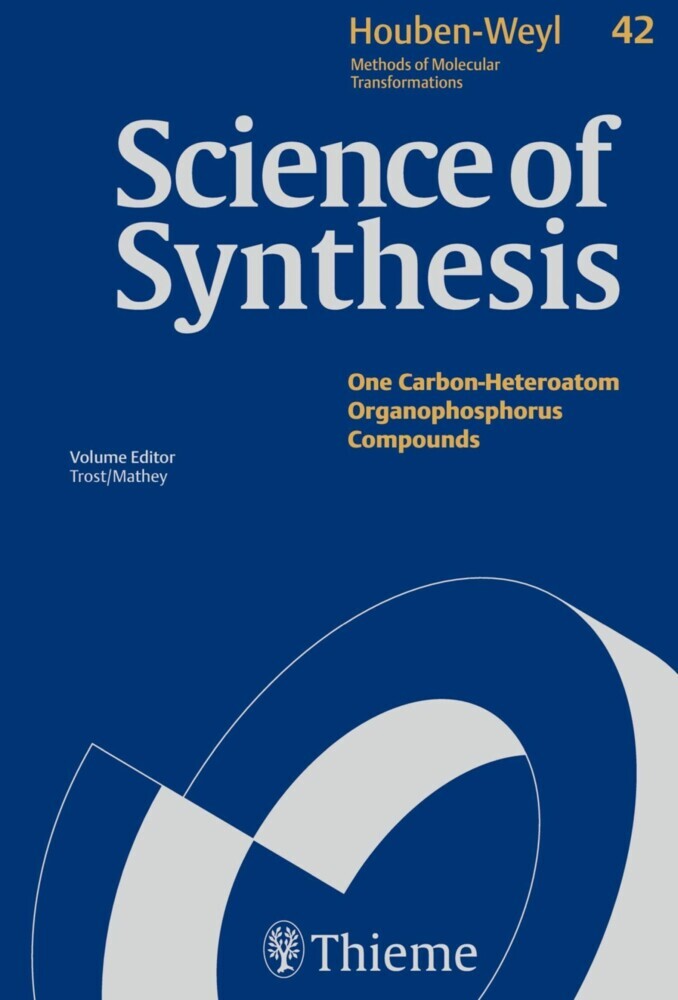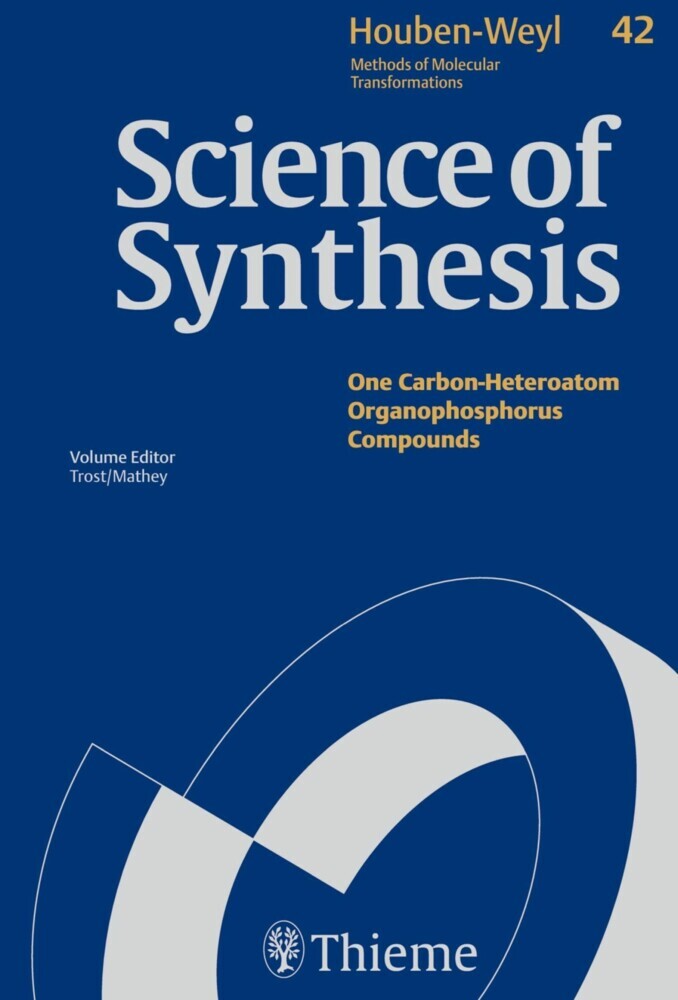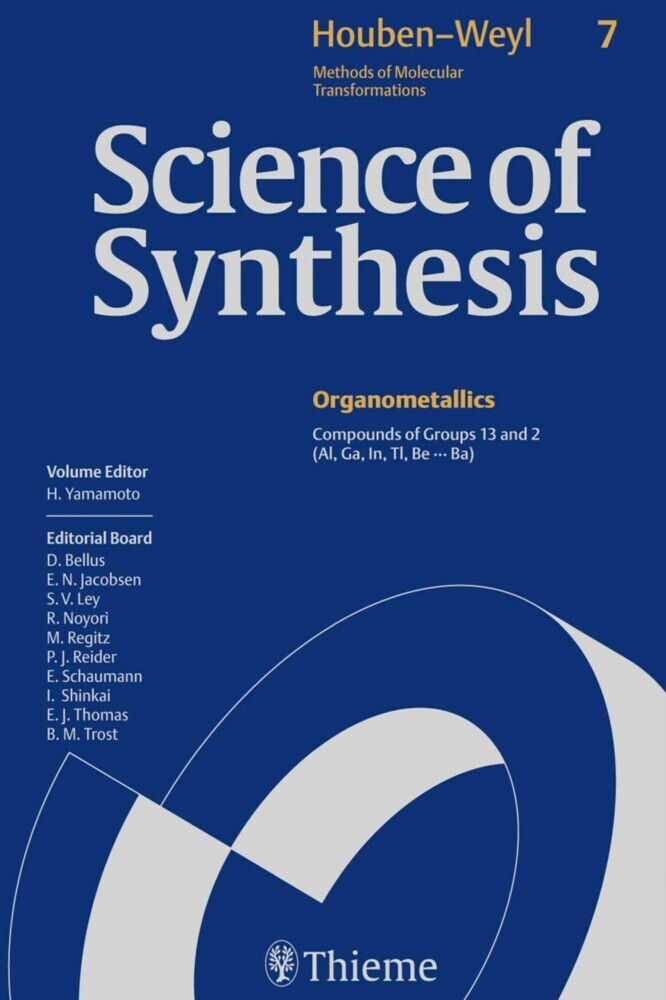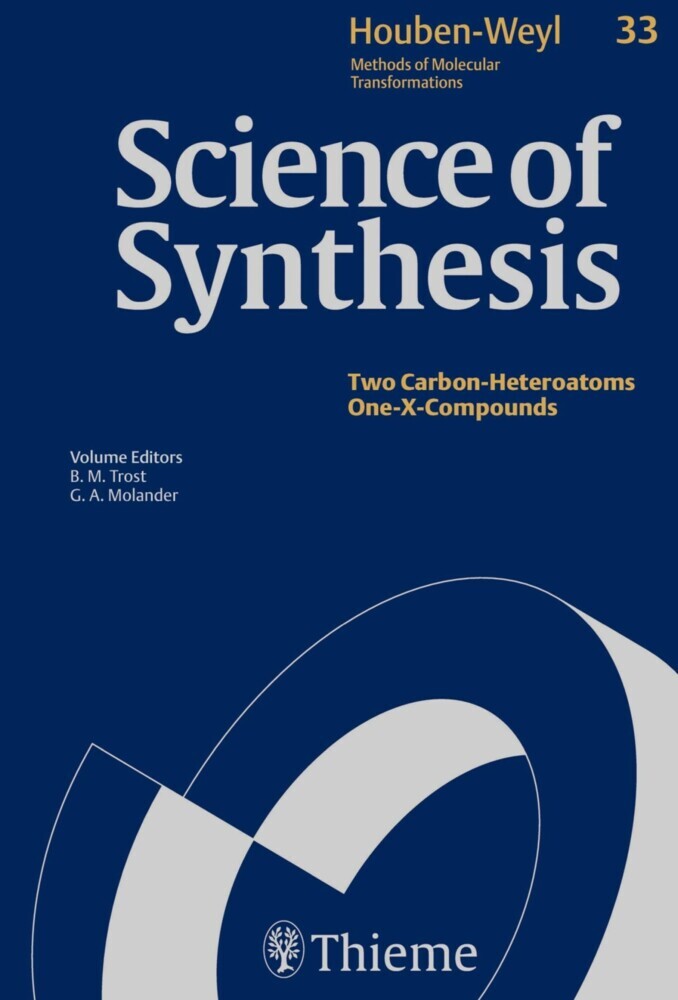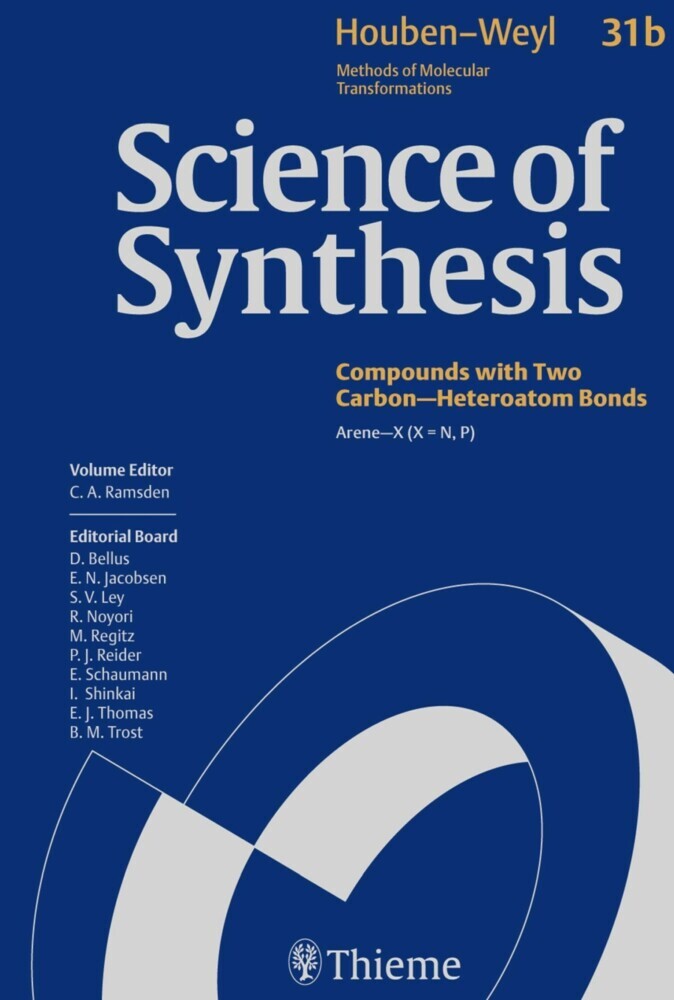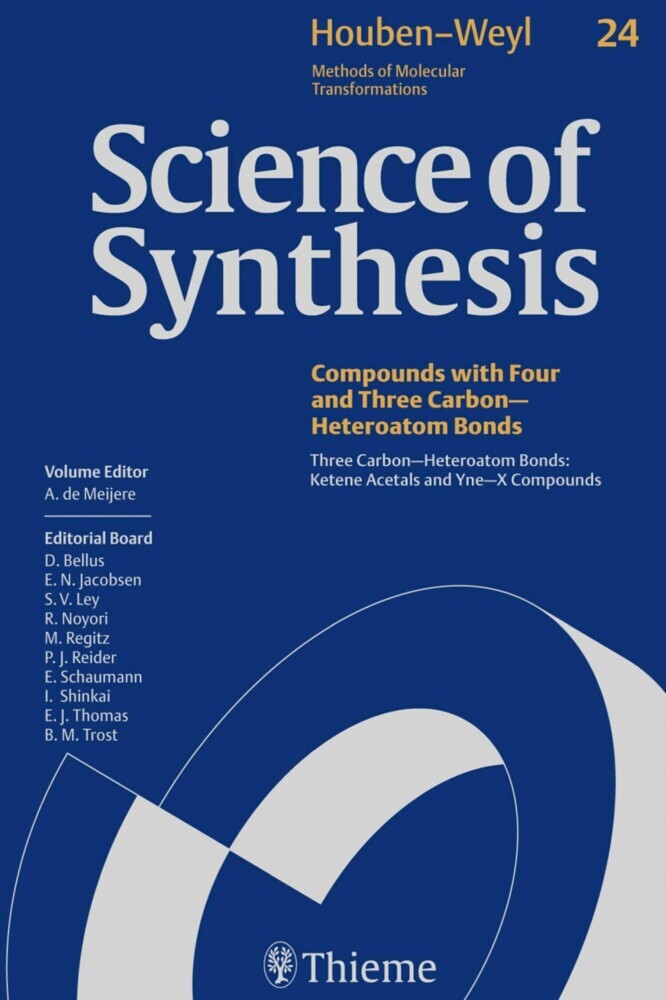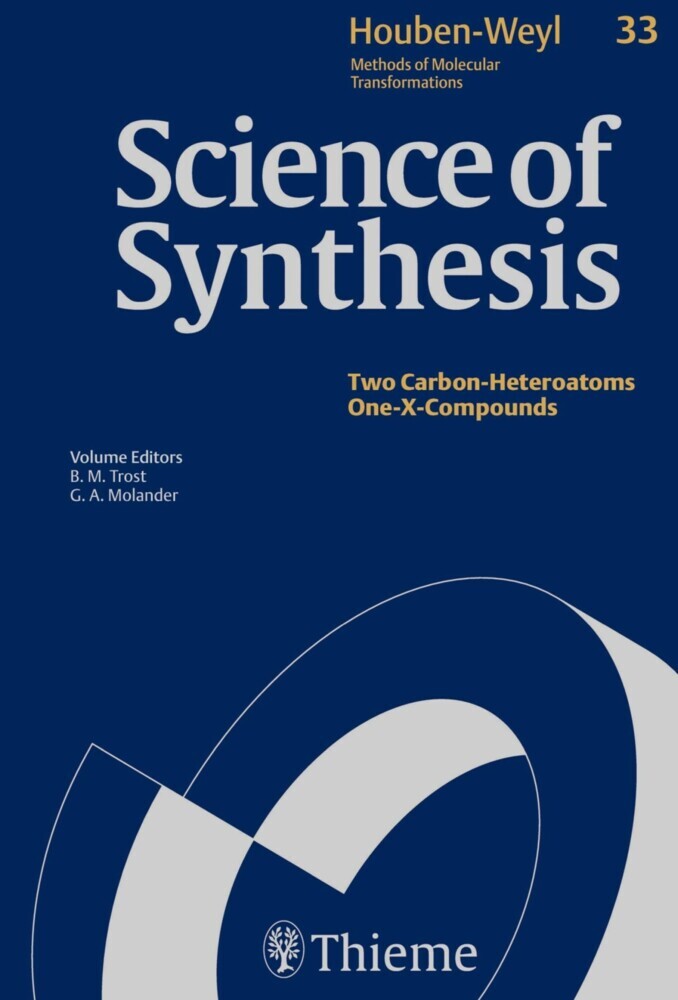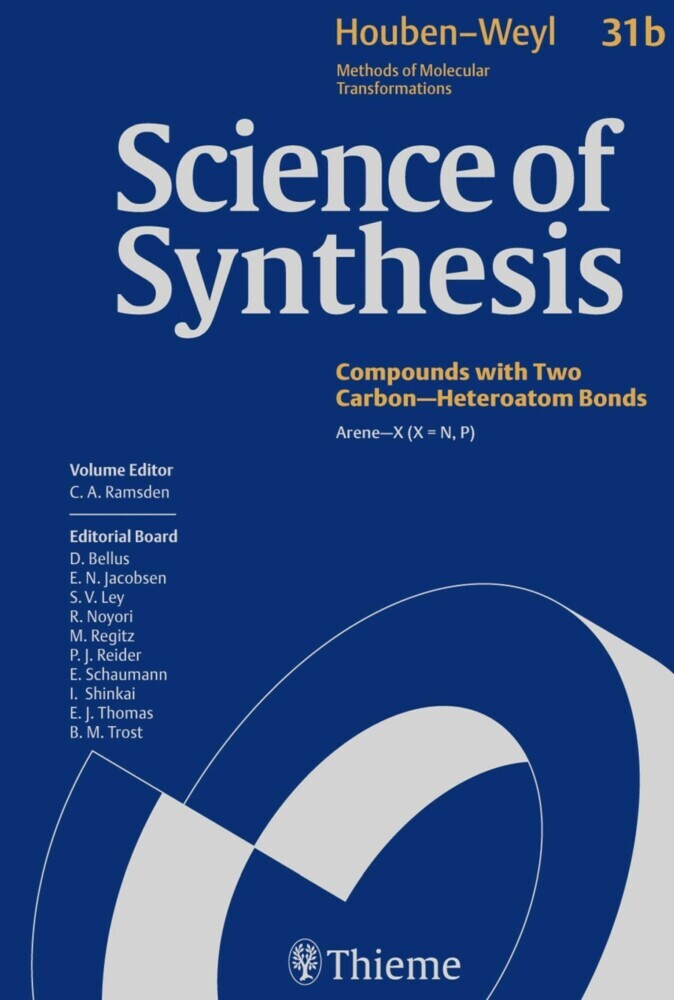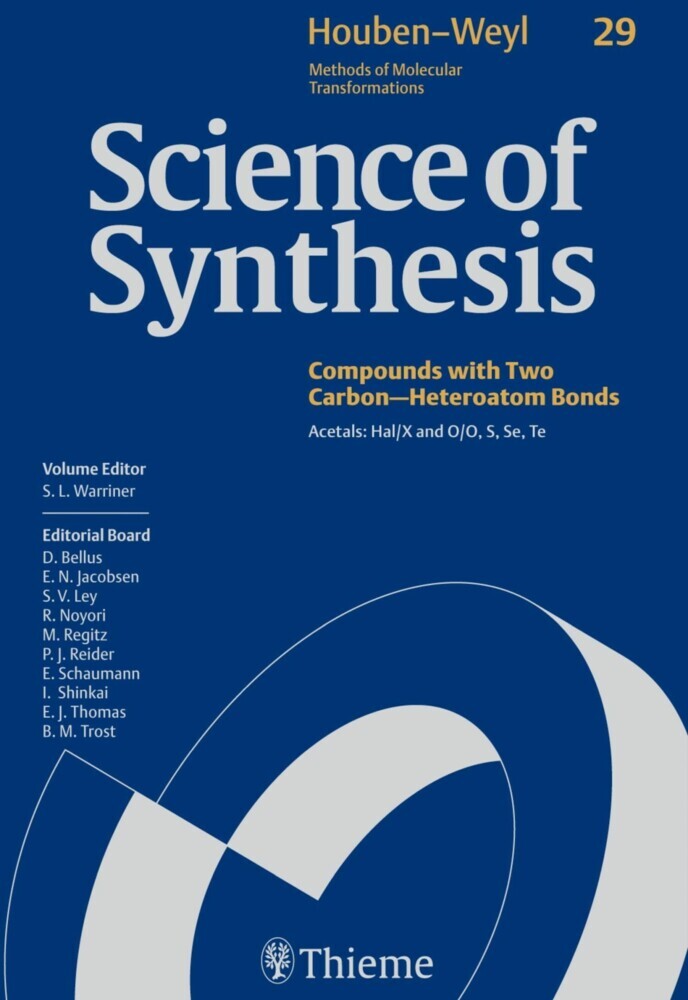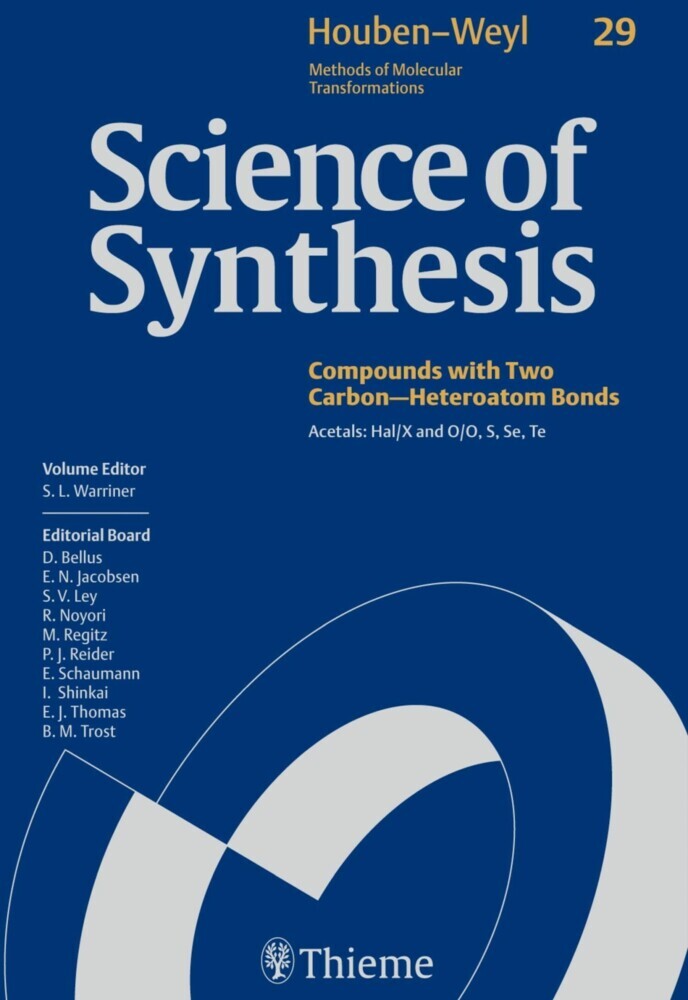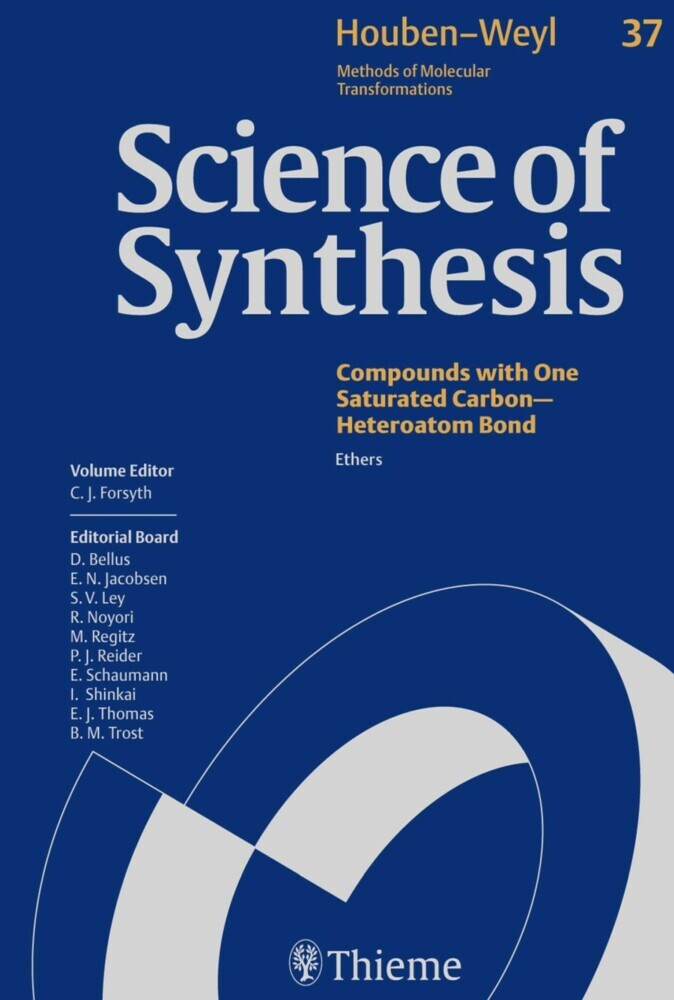Science of Synthesis: Houben-Weyl Methods of Molecular Transformations Vol. 42
Organophosphorus Compounds (incl. RO-P and RN-P)
Science of Synthesis: Houben-Weyl Methods of Molecular Transformations Vol. 42
Organophosphorus Compounds (incl. RO-P and RN-P)
Science of Synthesis: Houben-Weyl Methods of Molecular Transformations is the entirely new edition of the acclaimed reference series Houben-Weyl, the standard synthetic chemistry resource since 1909. This new edition is published in English and will comprise 48 volumes published between the years 2000 and 2008.
Science of Synthesis is a quality reference work developed by a highly esteemed editorial board to provide a comprehensive and critical selection of reliable organic and organometallic synthetic methods. This unique resource is designed to be the first point of reference when searching for a synthesis strategy.
- Contains the expertise of presently 400 leading chemists worldwide
- Critically evaluates the preparative applicability and significance of the synthetic methods
- Discusses relevant background information and provides detailed experimental procedures
For full information on the Science of Synthesis series, visit the Science of Synthesis Homepage
1;Science of Synthesis - Volume 42: Organophosphorus Compounds (incl. RO---P and RN---P);11.1;Title page;31.2;Imprint;51.3;Preface;61.4;Volume Editor's Preface;81.5;Overview;101.6;Table of Contents;121.7;Introduction;481.8;42.1 Product Class 1: Phosphinidenes and Terminal Phosphinidene Complexes;621.8.1;42.1.1 Product Subclass 1: Free Phosphinidenes;621.8.1.1;42.1.1.1 Synthesis of Product Subclass 1;631.8.1.1.1;42.1.1.1.1 Method 1: Elimination;631.8.1.1.1.1;42.1.1.1.1.1 Variation 1: Thermal Generation;631.8.1.1.1.2;42.1.1.1.1.2 Variation 2: Photolytic Generation;631.8.1.1.2;42.1.1.1.2 Method 2: Reduction;641.8.1.1.3;42.1.1.1.3 Method 3: Phospha-Wittig Reagents;641.8.1.2;42.1.1.2 Applications of Product Subclass 1 in Organic Synthesis;651.8.1.2.1;42.1.1.2.1 Method 1: Trapping Reactions;651.8.2;42.1.2 Product Subclass 2: Neutral Electrophilic Phosphinidene Complexes;661.8.2.1;42.1.2.1 Synthesis of Product Subclass 2;671.8.2.1.1;42.1.2.1.1 Method 1: Cheletropic Elimination;671.8.2.1.1.1;42.1.2.1.1.1 Variation 1: From 7-Phosphanorbornadienes;671.8.2.1.1.2;42.1.2.1.1.2 Variation 2: From Phosphiranes;691.8.2.1.1.3;42.1.2.1.1.3 Variation 3: From Phosphirenes;691.8.2.1.2;42.1.2.1.2 Method 2: Salt Metathesis;701.8.2.2;42.1.2.2 Applications of Product Subclass 2 in Organic Synthesis;711.8.2.2.1;42.1.2.2.1 Method 1: Trapping Reactions;711.8.3;42.1.3 Product Subclass 3: Cationic Electrophilic Phosphinidene Complexes;711.8.3.1;42.1.3.1 Synthesis of Product Subclass 3;711.8.3.1.1;42.1.3.1.1 Method 1: Chloride Abstraction;711.8.4;42.1.4 Product Subclass 4: Nucleophilic Phosphinidene Complexes;721.8.4.1;42.1.4.1 Synthesis of Product Subclass 4;721.8.4.1.1;42.1.4.1.1 Method 1: Salt Metathesis/Elimination;721.8.4.1.1.1;42.1.4.1.1.1 Variation 1: Of Metal Hydrides;731.8.4.1.1.2;42.1.4.1.1.2 Variation 2: Of Alkali Metal Phosphides;731.8.4.1.1.3;42.1.4.1.1.3 Variation 3: Of Transition Metal Phosphides;751.8.4.1.2;42.1.4.1.2 Method 2: Addition/Elimination;761.8.4.1.3;42.1.4.1.3 Method 3: Dehydrohalogenation/Ligation;771.8.4.1.4;42.1.4.1.4 Method 4: a-Hydrogen Migration;781.8.4.1.5;42.1.4.1.5 Method 5: Oxidation/Deprotonation;791.8.4.2;42.1.4.2 Applications of Product Subclass 4 in Organic Synthesis;801.8.4.2.1;42.1.4.2.1 Method 1: Phosphinidene-Transfer Reactions;801.9;42.2 Product Class 2: Oxo-, Thioxo-, Selenoxo-, and Iminophosphines and Diphosphenes;841.9.1;42.2.1 Product Subclass 1: Oxophosphines;841.9.1.1;42.2.1.1 Synthesis of Product Subclass 1;841.9.1.1.1;42.2.1.1.1 Method 1: Elimination Reactions;841.9.1.1.2;42.2.1.1.2 Method 2: Cycloreversion Reactions;851.9.2;42.2.2 Product Subclass 2: Thioxophosphines and Selenoxophosphines;861.9.2.1;42.2.2.1 Synthesis of Product Subclass 2;871.9.2.1.1;42.2.2.1.1 Method 1: Elimination Reactions;871.9.2.1.2;42.2.2.1.2 Method 2: Cycloreversion Reactions;871.9.2.1.3;42.2.2.1.3 Methods 3: Miscellaneous Reactions;891.9.3;42.2.3 Product Subclass 3: Iminophosphines;911.9.3.1;42.2.3.1 Synthesis of Product Subclass 3;911.9.3.1.1;42.2.3.1.1 Method 1: Elimination Reactions;911.9.3.1.2;42.2.3.1.2 Method 2: Substitution Reactions;921.9.3.1.3;42.2.3.1.3 Method 3: Cycloreversion Reactions;931.9.4;42.2.4 Product Subclass 4: Diphosphenes;941.9.4.1;42.2.4.1 Synthesis of Product Subclass 4;941.9.4.1.1;42.2.4.1.1 Method 1: Elimination and/or Condensation Reactions;941.9.4.1.2;42.2.4.1.2 Method 2: Rearrangement Reactions;981.9.4.1.3;42.2.4.1.3 Method 3: Substitution Reactions;991.9.5;42.2.5 Product Subclass 5: Heteroatom-Substituted Diphosphenes;1001.9.6;42.2.6 Product Subclass 6: Stereodefined Diphosphenes;1011.9.7;42.2.7 Product Subclass 7: Heteroatom-Substituted Iminophosphines;1031.9.7.1;42.2.7.1 Synthesis of Product Subclass 7;1031.9.7.1.1;42.2.7.1.1 Method 1: Elimination Reactions;1031.9.7.1.2;42.2.7.1.2 Method 2: Substitution Reactions;1051.9.8;42.2.8 Product Subclass 8: Tetraphosphenes;1051
| ISBN | 9783131783912 |
|---|---|
| Artikelnummer | 9783131783912 |
| Medientyp | E-Book - ePUB |
| Copyrightjahr | 2014 |
| Verlag | Georg Thieme Verlag KG |
| Umfang | 1173 Seiten |
| Sprache | Englisch |
| Kopierschutz | Digitales Wasserzeichen |

